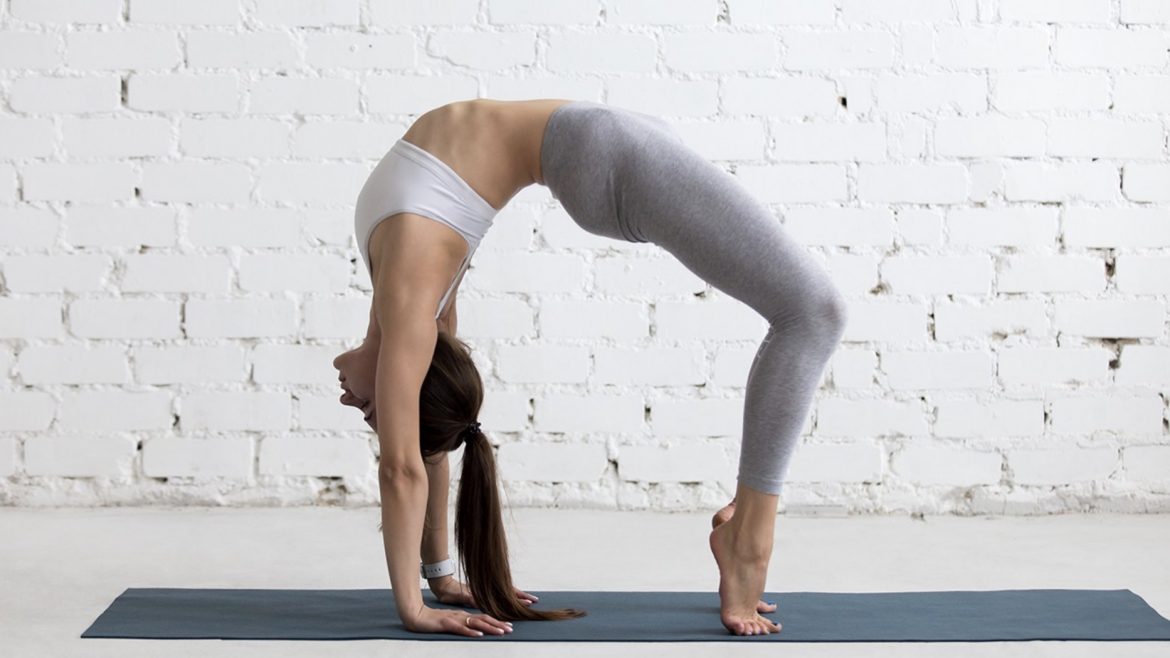You’re busy. You’re tired. You’re stressed. And you’ve heard from everyone and their mother that yoga for stress relief would be good for you. Sound familiar?
You’re not alone. 44% of Americans say their stress has gone up in the past five years. At the same time, 36.7 million people are practicing yoga in the U.S.
One of the most popular beliefs about yoga? It’s great for stress relief.
Here’s how this yoga thing works – and how you can use a yoga practice to lower your stress levels for a happier, healthier life.
What is Yoga?
No, it’s not just handstands, no matter how many Instagram yogis do crazy things upside down. You don’t have to be an acrobat either, though some yogis have fun with it.
Answering the question, “what is yoga?” is something people have devoted years of study on the mat and in academia to answer. To put it simply, yoga is a comprehensive well being system developed 5,000 years ago in India.
The Yoga of Today
The yoga you’re probably familiar with is a derivative of hatha yoga, which is a system of breath and movement. It’s similar to vinyasa yoga, the most popular style of yoga in the U.S., but they’re not quite the same thing.
To do a lot of simplifying, hatha yoga is a system that refers to a set of postures designed to align your mind and body. Vinyasa is distinctive in that it focuses on dynamic flows paired with the breath.
Yoga, as it exists in the U.S. today, can also encompass a lot of spiritual aspects, some of which we talk about on our blog. Other styles place a stronger emphasis on the physical practice (and, yes, handstands. Admit it, you’ve looked at those crazy handstands and thought it was pretty cool.)
It all comes down to the practitioner.
So which style makes a good yoga for stress relief practice? A lot of them, including hatha, slow flow vinyasa, yin, and viniyoga.
It also depends on what style of yoga suits you. Some people can find stress relief in hot yoga, while others find their oasis in the intense flows of Ashtanga. Still, others would drive themselves up the walls trying to calm down while doing these practices.
Know thyself. Do some experimenting to find what works for you.
How Yoga Relieves Stress
It all comes down to the breath.
When you pay attention to your breath – all styles of yoga ask that you do – you’re forced to focus your attention inwards. In other words, you’re forced to slow down.
Practicing yoga for stress relief has been shown to reduce levels of the stress hormone cortisol if you clock in a regular 30 to 60-minute practice over a three to six month period.
Yoga for Stress Relief
What makes a good yoga practice? You, your breath, and some space.
Yup. That’s it. No fancy equipment required (but if nice equipment can help you get in the groove, Simply Fitness Equipment has some great stuff.)
Ready to give yoga a whirl? Here are a few asanas to master in your practice of yoga for stress relief.
Legs Up the Wall
Legs up the wall are where it’s at. No, really.
Your heart spends all day pumping blood towards your feet and back up again. This is a great way to give your heart a rest – trust me, you’ll feel your heart rate slow down when you do this.
Sit up next to a wall and get your sitting bones as close to the wall as you can. Lay with your back flat on the floor and your tailbone against the wall. Rest your legs up against the wall.
Toes can be pointed or flexed, or you can alternate (which feels pretty good.) If this position is at
all uncomfortable for your back, you can add support with a blanket. Tune in to your breath.
Oh, and if you didn’t believe me about your heart rate going down, put one hand over your heart when you do this.
Child’s Pose
Better known as the savior of any flow practice when all you want to do is lay down.
Child’s pose is often used as a rest pose in flow classes. First, put your toes together and your knees as wide as the mat. Slowly start to lower down so your chest reaches toward the floor, with your arms reaching toward the front of the mat.
If you’re tight through your hips, it may be difficult to lower your sitting bones all the way to your heels. One modification is to come up on the balls of your feet, or place a block, folded blanket, or pillow between your feet and sitting bones.
Sun Salutations with Twists
Sun salutations are the building blocks of most yoga practices and encompass all of the foundational poses of yoga.
Adding twists to the equation works to wring out your digestive system and forces you to slow down your salutations.
The easiest sun salutation to start out with is a modification of sun salutation A, incorporating high lunge twists. For a breakdown of modifications to try, click here.
Savasana/Corpse Pose
It’s not as ominous as it sounds.
Savasana is often the finishing posture in yoga practices, used to incorporate all the work of the practice that came before.
To come into Savasana, lay flat on the floor with your arms on either side and your legs stretched out in front. Tune into your breath. Don’t try to change it, just see what it feels like to breathe in and out.
Stay here for as long as you’d like. Some classes have Savasana last several minutes and may incorporate a guided meditation.
If you get antsy in Savasana (which is common if you’re not used to it) come back to your breath. Let thoughts come and go instead of getting caught up in them.
Relieve Stress, Discover Your Life’s Mission
By using the above tips, you should be feeling less stressed out day by day.
If you want to relieve stress further, a Quantum Healing Hypnosis Technique session can help.
What is QHHT? If you’ve ever heard of someone talking about their past life and wondered what you could find out about yourself, QHHT past life regression is a method that has allowed thousands to do just that.
Read this to see what to expect from your session.



